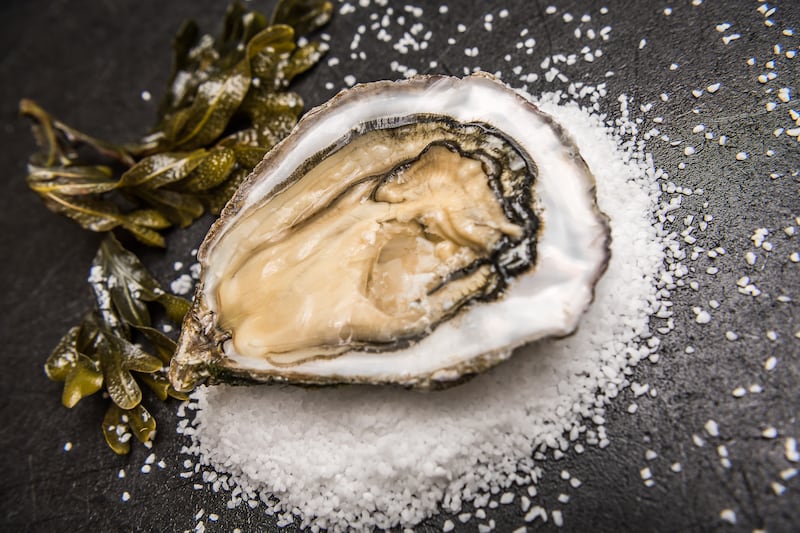One of the most memorable meals I’ve ever enjoyed was eaten off a paper plate in a frosty wind at a roadside picnic table. Sure, in a life well-indulged in food, there have been plenty of white tablecloths and fine china. But this was something beyond.
My wife and I had been driving in northern California, following the narrow road winding beside lovely Tomales Bay. At lunchtime we stopped at a little general store to see if they had anything worth trying.
Turns out, the store doubled as the headquarters of a family oyster farm. They loaded us up and showed us to the picnic table outside. In the water at our feet, I could see bags of oysters waiting to be harvested. With the first taste, I experienced true bliss. The briny chill of the oyster, the briny chill of the bay breeze. It was like we were fully immersed in the magic of salt water and sea air.
Oysters have a profoundly transportive power few other foods can touch. Like great wine, they distil and amplify the essence of the place they come from. It’s no wonder one of the current buzzwords in cuisine is “mer-oir”, the oceanic equivalent of the wine geek’s terroir.
All of this is a long-winded way of telling you that in a life rich in oysters, some of the very best I’ve ever had have come from Ireland, specifically from a farm not 10km from my home.
This should be a source of real pride for Irish food lovers, but I’m afraid there is also a tinge of shame. Because as wonderful as Woodstown Bay Shellfish’s oysters are, there is almost no domestic market for them. They are almost all exported – mostly to Asia, where they are so coveted they draw prices of up to €8 or €9 each.
Woodstown does sell a few locally, but just to old friends. In fact, two of their three Irish purveyors are within a couple of hundred metres of the Dunmore East processing centre – Elaine Powers’s wonderful East Pier chipper is right next door (and offers Guinness in the bottle – a brilliant match for the oysters); and Tony Kelly’s Dunmore East Fish Shop is just up the hill. A little farther away, seafood specialist Billy Burke in Waterford’s Ballybricken townland carries them.
A 30-year-old family operation, Woodstown Bay is now run by the second generation: sisters Naomi and Carleena Barlow and brother Gavin. It was founded by their parents, Paul and Carolyn Barlow.
The oysters are grown in Woodstown Bay, just outside Waterford city. Oysters love long, shallow tidal estuaries where salt and fresh water mingle. At Woodstown, the rich waters of the Nore, Suir and Barrow rivers meet the icy Celtic Sea and, at ebb tide in Woodstown, the oyster beds are plainly visible and seem to stretch almost to the horizon.

Despite being almost nonexistent in Irish markets, Woodstown Bay is one of the largest oyster farms in the country, harvesting roughly 1,000 tonnes annually.
And while some forms of aquaculture have a deservedly mixed reputation, oyster farming is among the most sustainable food sources you will ever find. Not only do oysters pull carbon from the atmosphere, but, being filter-feeders, they actually clean the water they’re grown in. And it’s estimated that roughly 90 cents of every €1 in revenue stays in the growing area.
Oysters, of course, have a long history in Ireland. Archaeologists have unearthed middens dating back 4,000 years. They were commercially important well into the mid 19th century, when a combination of overfishing and disease devastated the native crop.
Woodstown’s oysters are an introduced species called Crassostrea gigas, which were first farmed in Ireland in the 1970s. These have two distinct advantages over the native Irish flat oysters. First, they can be harvested without dredging, which can cause severe damage to the ocean floor. And they are specially bred to be sterile (much like seedless watermelon), so they don’t turn milky in warm weather and can be enjoyed year-round.
Growing oysters is labour intensive. The seed, roughly the size of a fingernail, is put in large black mesh bags, roughly 3,000 to the bag, and staked out on the tidal flats. Periodically, they are brought back to the processing centre in nearby Dunmore East where they are sorted and re-bagged according to size to allow room to grow. This process is repeated over the oysters’ four-year lifespan until there may be as few as 120 per bag.
The fact that they are four years old at harvest rather than the more common two or three years makes a big difference, says Naomi Barlow.
[ The Tipperary bakery known all over Ireland for its fabulous brackOpens in new window ]
“We prefer to mature the oysters to develop the flavour. It’s very expensive to do that – it takes another year – but that way we get oysters with a fattier, more developed flavour.”
Woodstown’s oysters do have a rich flavour that seems to explode in your mouth, full of brine and minerality with a hint of something like citrus that lingers long after you’ve swallowed.
It’s the taste of the Irish Sea, only better.






